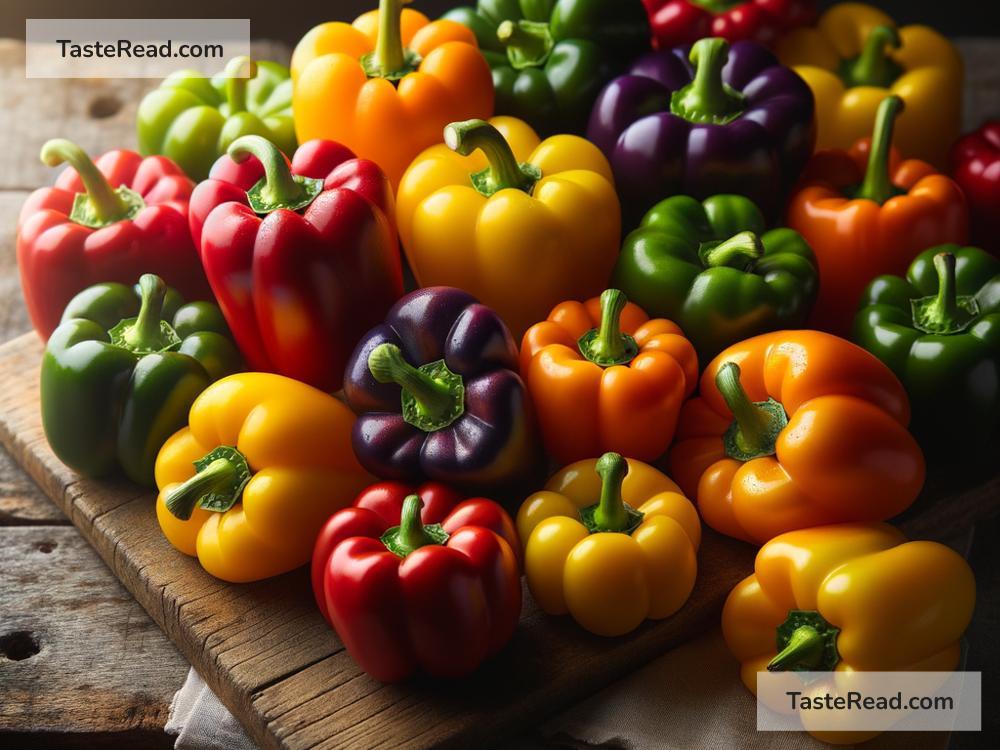Why Bell Peppers Come in So Many Colors
Bell peppers are a favorite vegetable for many people because they are tasty, crunchy, and colorful. If you’ve ever walked down the grocery store aisle or visited a farmers’ market, you’ve probably noticed that bell peppers come in a variety of colors like green, red, yellow, orange, and even purple. Have you ever wondered why bell peppers come in so many colors? In this blog, we’ll break it down in simple terms.
It’s All About Ripeness
The main reason bell peppers are different colors is because of their stage of ripeness. All bell peppers start out green when they are immature. As they grow and mature, their color changes. A green bell pepper is just an unripe pepper. If it stays on the plant longer, it will turn into a different color. Most green peppers ripen into red, but depending on the type of pepper, they can also turn yellow, orange, or purple.
Think of it like fruit—green bananas turn yellow as they ripen, and bell peppers go through a similar process. The longer a pepper stays on the plant, the sweeter it becomes and its color deepens. Green peppers have a crisp, slightly bitter taste, while red, yellow, and orange peppers are much sweeter.
Different Pepper Varieties
Color differences also come from the type of bell pepper. There are different varieties of bell peppers, and each one has its own unique traits. Some peppers are bred to ripen red, some to ripen yellow, and others orange or even purple. Farmers and seed companies develop these varieties by cross-breeding peppers and selecting traits like color, sweetness, and texture.
For example, red bell peppers are usually the sweetest variety, while orange peppers have a mild and fruity flavor. Purple peppers are less common and might have a slight bitterness, similar to green peppers. These variations make bell peppers versatile for cooking, adding both color and flavor to dishes.
Each variety has its own timeline for ripening, and some are naturally more colorful than others.
Nutrients Affect Color
Bell peppers don’t just look pretty—they’re also incredibly healthy! Here’s something cool: the color of a bell pepper can tell you about the nutrients inside it. Green peppers usually have fewer nutrients compared to their fully ripened counterparts. As bell peppers mature, they develop more vitamins and antioxidants like Vitamin C and beta-carotene.
For example, red bell peppers have the most nutrients. They are packed with Vitamin C—about twice as much as green peppers. Yellow and orange peppers also contain high amounts of antioxidants, making them a nutritious choice. So, the ripest peppers not only taste sweeter but are also better for your health!
Why Green Peppers Are Cheaper
You might have noticed that green bell peppers are usually cheaper than red, yellow, and orange ones at the store. Why is that? It’s because green peppers are harvested earlier, so they don’t need as much time to grow and ripen. Farmers can pick them sooner and send them to the market quicker, saving on costs.
On the other hand, red, yellow, and orange peppers take more time to mature. This longer ripening process means farmers have to wait before harvesting them, which adds extra time and labor. As a result, fully ripened peppers are pricier. Their sweeter taste, better texture, and higher nutrient content also make them more valuable.
Environmental Factors Can Play a Role
Did you know that the growing environment can also affect the color of bell peppers? Things like sunlight, temperature, and soil quality can influence how vibrant a pepper’s color becomes. For example, peppers grown in warmer climates with plenty of sunshine tend to ripen faster and develop deeper shades. Cooler temperatures might slow down the ripening process or make colors less intense.
Farmers also play a role by carefully managing these environmental factors to produce the best peppers. Choosing the right growing conditions ensures peppers ripen properly and show their brightest and most appealing colors.
Fun Fact: Bell Peppers Are Fruits!
Here’s a fun fact that might surprise you: bell peppers are technically fruits, not vegetables! Fruits are defined as plant parts that develop from flowers and contain seeds. Since bell peppers grow from a flower and contain seeds inside, they fit the definition of a fruit. However, most people think of them as vegetables because they aren’t sweet like apples or oranges.
Cooking with Colorful Bell Peppers
One of the best things about bell peppers is how their vibrant colors can brighten up a meal! Whether you’re making a salad, stir-fry, or roasting them, the variety of colors adds both flavor and beauty to your plate. You can even mix different colors for extra texture and sweetness.
For example, green peppers might work well in savory stir-fries, while red and yellow peppers are perfect for eating raw in salads or dipping into hummus. Cooking with colorful peppers is a fun way to experiment in the kitchen!
Conclusion
Bell peppers come in so many colors because of their ripeness, variety, nutrients, and environmental conditions. Green peppers are unripe, while red, yellow, and orange peppers are fully ripened and sweeter. Each color brings its unique flavor, making bell peppers one of the most versatile and colorful foods available.
Next time you see bell peppers at the store, take a moment to appreciate their rainbow of colors. Whether you choose green, red, yellow, or orange, you’re getting a delicious and nutritious vegetable that adds joy to your meals!


